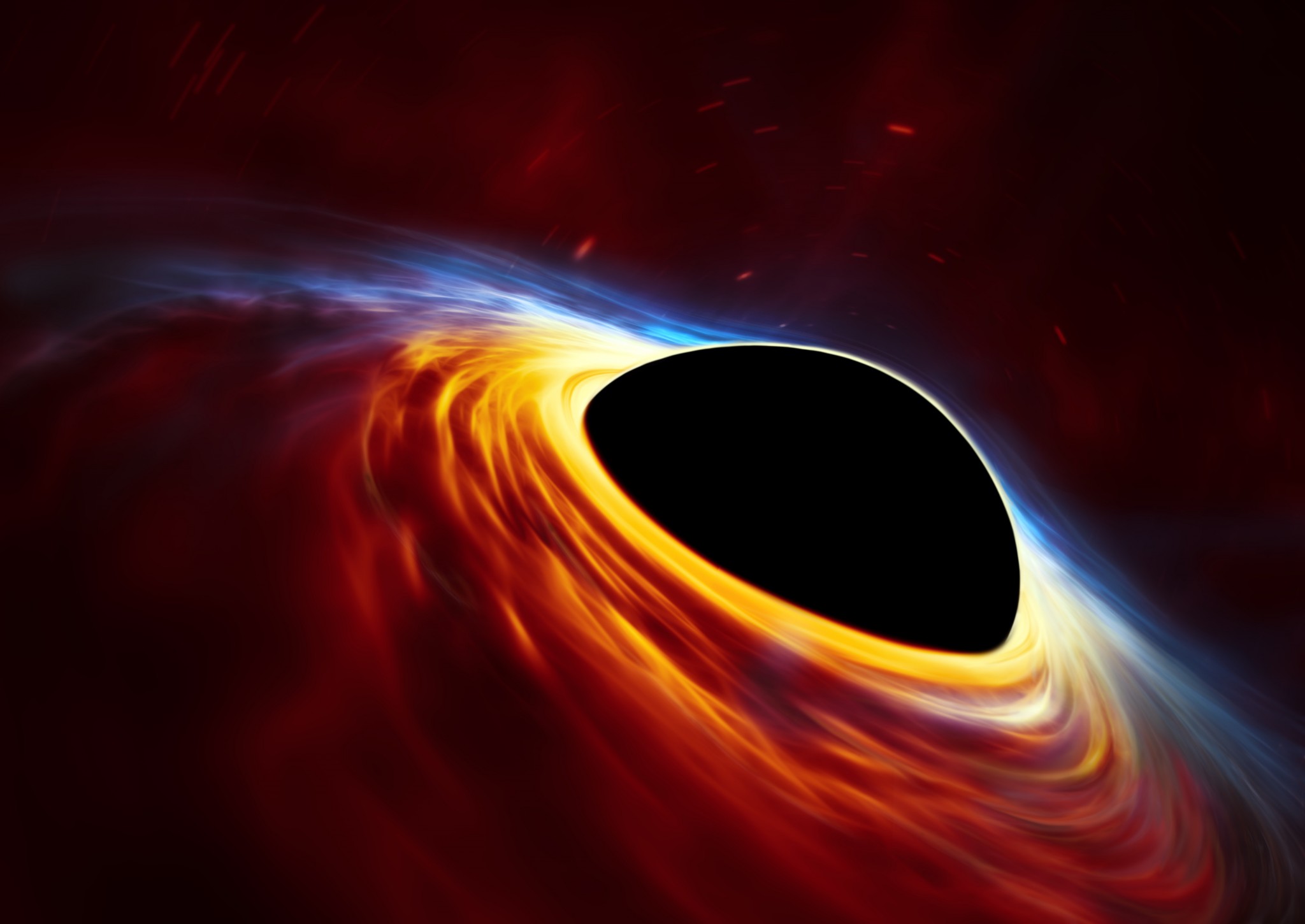Massive black hole in 10 years completely “ate” the neighboring star

Scientists from NASA recently published information about a massive black hole that is gradually “biting bit by bit” from a nearby star. This is the longest period of observation of a similar process in the history of astronomy. The researchers discovered a black star with the help of the Chandra space x-ray observatory, the Swift satellite and XMM-Newton .
When large objects like stars approach the black hole too close, it can literally tear the star apart due to a tidal horizon event. As soon as the star enters the gravitational field of a black hole, it starts to slowly absorb the matter of the star, discarding a part of matter, and this process can last for a long time - for decades.
Scientists observed the event of tidal decay with the help of X-ray telescopes, which allow you to see what cannot be observed with an ordinary optical telescope, even if it is very powerful. Until now, experts have already observed a similar interaction between a black hole and a nearby star, but the maximum duration of absorption was no more than a year. Now we are talking about as many as ten years, although at the moment everything is over .
')
"We witnessed an impressive, long-term death of a star," says Dacheng Lin of the University of New Hampshire. “Since 1990, we have seen dozens of similar events, but none of them have been as bright as this,” he says.

The black star, catalog number XJ1500 + 0154, is located far from the Earth, at a distance of 1.8 billion light years. Researchers first discovered it in 2005. The maximum brightness of the black hole system - absorbed by the star reached in 2005. NASA believes that scientists have witnessed the black hole's absorption of the largest star during the entire observation of such events.
“In most cases, when we looked at this object, it grew in size,” says James Gillichon of the Harvard-Smithsonian Center for Astrophysics. The scientist claims that this means the absorption by the black hole of a star, which is at least twice as heavy as the sun.
This case clarified some details of the evolution of black holes, and also allowed scientists to understand how a situation may develop when a black hole captures a star in its gravitational field. Experts believe that XJ1500 + 0154 will still manifest itself for some time, and the residual death of the star can be observed for some time.
Scientists observed a similar process in all its details in 2015 . Then an international group of thirteen astrophysicists, led by a specialist from Johns Hopkins University (Baltimore, USA), fully recorded the process of absorption of the material of the nearest star with the ejection of part of the material at near-light speed.
This happens almost always in such situations. Theoretical calculations have shown earlier that if a star is absorbed by a supermassive black hole, a part of the “eaten” gas will turn into a plasma and begin to leak from the poles of the hole into the surrounding space in the form of a conical jet. Unfortunately, scientists are not so often able to observe this process.
The process itself begins from the moment of capture of the star by the black hole. The star is gradually tightened, its substance is heated to millions of degrees and generates a huge amount of X-ray radiation. It is fixed by the ground and orbital systems. After the maximum "brightness" of the X-ray flash, the glow gradually fades away, since most of the matter falls beyond the horizon of the black hole, i.e. falls into the place where even the light cannot escape. The remaining gas gradually spirals around and falls into a black hole.
“Such events occur very rarely. For the first time, we are witnessing the whole process, from the moment of star destruction until the appearance of a conical gas outflow to the outside, ”said one of the participants in the study, Sjort van Welzen. For the first time, scientists discovered this system in December 2014. From then on to 2015, they continued to observe the destruction of the star by the black hole until the moment when the star was destroyed in gravitational "hugs".
The largest black hole discovered by man is an object with a mass of 21 billion solar masses, located in the Veronica Hair Cluster (about 1000 galaxies are recorded here). This giant is located in a cluster of galaxies. The second largest black hole has a mass of 17 billion solar masses. This is 2% of the mass of the galaxy itself. Found it in a small galaxy NGC 1600. Experts compare this black hole with a skyscraper, which is located in the center of a small town or even a village.
Source: https://habr.com/ru/post/401427/
All Articles